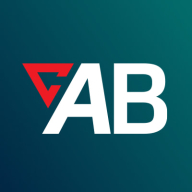

ActiveBatch by Redwood and IBM Cloud Pak for Automation are competing in the workflow automation solutions category. ActiveBatch by Redwood has a lead in terms of ease of use and customer support, while IBM Cloud Pak for Automation is noted for its extensive feature set and scalability, potentially justifying its higher price point.
Features: ActiveBatch by Redwood provides seamless integration with various applications, making it user-friendly for business process automation. It supports diverse triggers and offers expansive scheduling options. IBM Cloud Pak for Automation provides AI-driven capabilities, extensive analytics, and flexible deployment options, allowing for more complex automation tasks.
Ease of Deployment and Customer Service: ActiveBatch by Redwood features a straightforward deployment process, supported by reliable customer service, facilitating easy implementation across varied environments. IBM Cloud Pak for Automation requires a more complex setup but provides extensive resources and dedicated support to aid deployment, suited for large-scale implementations.
Pricing and ROI: ActiveBatch by Redwood is often viewed as more cost-effective with quicker ROI due to lower initial costs. In contrast, IBM Cloud Pak for Automation has higher setup costs, with a promising long-term ROI for organizations needing advanced functionalities, willing to invest in a robust solution.
| Product | Market Share (%) |
|---|---|
| IBM Cloud Pak for Automation | 0.5% |
| ActiveBatch by Redwood | 0.8% |
| Other | 98.7% |

| Company Size | Count |
|---|---|
| Small Business | 10 |
| Midsize Enterprise | 13 |
| Large Enterprise | 46 |
ActiveBatch by Redwood enhances efficiency with features like job scheduling, integration, and real-time monitoring. It supports diverse platforms, automates tasks, and offers a single-pane view with robust security.
ActiveBatch streamlines automation by offering drag-and-drop functionality, pre-built job steps, and native integrations. Its customizable workflows and alert system aid in managing complex workloads like data processing and server monitoring across hybrid environments. While it effectively reduces manual errors and enhances productivity, areas like navigation and support for cloud platforms need enhancement. New users may face challenges due to its complexity and steep learning curve, and further improvements in reporting, mobile access, and training could provide additional support to users.
What important features does ActiveBatch offer?In finance, ActiveBatch is implemented for orchestrating batch processes and data management. The healthcare industry utilizes it for automating patient data updates and server monitoring, while the retail sector benefits from file transfers and inventory management automation.
IBM Cloud Pak for Automation offers design, build, run, and automation services to rapidly scale your programs and fully execute and operationalize an automation strategy.
We monitor all Process Automation reviews to prevent fraudulent reviews and keep review quality high. We do not post reviews by company employees or direct competitors. We validate each review for authenticity via cross-reference with LinkedIn, and personal follow-up with the reviewer when necessary.